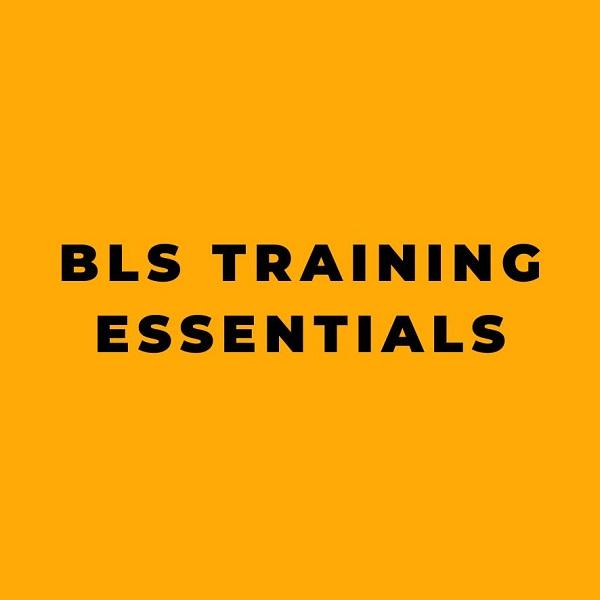Basic Life Support (BLS) Training Essentials are crucial for anyone in the healthcare or public safety industry. BLS training equips individuals with the knowledge and skills needed to respond to breathing and cardiac emergencies in adults, children, and infants. It covers critical procedures such as cardiopulmonary resuscitation (CPR), automated external defibrillator (AED) use, and obstructed airway management. In this comprehensive article, we will explore the essentials of BLS training, including its significance, course content, instructor essentials, and the different perspectives and approaches related to BLS training.
Understanding BLS Training Essentials
1. Importance of BLS Training
Basic Life Support (BLS) training is essential for healthcare providers, first responders, and even the general public. The skills learned in BLS training can mean the difference between life and death in an emergency situation. By providing immediate care to individuals experiencing cardiac or respiratory arrest, BLS-certified individuals can significantly improve patient outcomes.
BLS training is designed to equip individuals with the knowledge and skills to recognize life-threatening emergencies, provide high-quality chest compressions, deliver effective rescue breaths, and use an AED when necessary. These skills are crucial in maintaining the chain of survival, which includes early recognition and activation of the emergency response system, early CPR, rapid defibrillation, effective advanced life support, and integrated post-cardiac arrest care.
2. Course Content of BLS Training
The BLS training curriculum covers a range of essential topics, including:
– General concepts of basic life support
– Initiating the chain of survival
– BLS for adults, children, and infants
– Use of Automated External Defibrillator (AED)
– One and two-rescuer BLS/CPR techniques
– Pediatric BLS algorithms
– Ventilation techniques for adults, children, and infants
The course content aligns with the latest guidelines from respected organizations such as the American Heart Association (AHA) and the International Liaison Committee on Resuscitation (ILCOR), ensuring that participants receive the most up-to-date and evidence-based training.
3. BLS Instructor Essentials
Becoming an instructor for BLS training requires a thorough understanding of BLS principles and teaching methodologies. The BLS Instructor Essentials Course is designed to prepare instructor candidates to teach AHA Instructor-led and blended learning BLS Provider courses. It covers core content and discipline-specific content required to teach AHA courses, including steps for becoming an AHA Instructor, the usability of the Program Administration Manual (PAM), core competencies of an AHA Instructor, and the 5 steps of the AHA Instruction Cycle.
Upon successful completion of the BLS Instructor Essentials Course, instructors should be able to identify the prerequisites for becoming an AHA Instructor, describe the core competencies of an AHA Instructor, and understand the 5 steps of the AHA Instruction Cycle.
Perspectives and Approaches to BLS Training
1. American Red Cross BLS Training
The American Red Cross offers BLS training for individuals and teams, with courses that are held entirely in person or through a blended Simulation Learning experience. Their BLS classes are developed under the guidance of the American Red Cross Scientific Advisory Council and are consistent with the latest AHA Guidelines for CPR/ECC. The Red Cross provides a comprehensive approach to BLS training, allowing participants to learn life-saving techniques and prepare for a career in the medical field or public safety.
2. Free Online BLS Certification Courses
In partnership with organizations like the Disque Foundation, there are free online BLS courses available for individuals seeking BLS certification, recertification, or BLS for Life. These courses offer a cost-effective and accessible way for individuals to obtain BLS certification, making it easier for healthcare providers and other professionals to maintain their certification credentials.
Common Questions and Misconceptions
1. BLS Renewal and Refresher Materials
One common misconception is that BLS certification is a one-time requirement. In reality, BLS certification typically needs to be renewed every two years to ensure that providers stay current with the latest guidelines and best practices. Additionally, refresher materials and resources are available to help BLS-certified individuals stay sharp between certification periods.
2. BLS Certification for Different Professions
Another common question pertains to the relevance of BLS certification for various professions. BLS certification is not only essential for healthcare providers but also for individuals in public safety roles, such as police officers, firefighters, and lifeguards. The skills and knowledge gained from BLS training are applicable in a wide range of settings where immediate response to emergencies is critical.
Conclusion
In conclusion, BLS Training Essentials are vital for anyone who may find themselves in a situation where they need to respond to a cardiac or respiratory emergency. The skills learned in BLS training can save lives and improve patient outcomes. From the core concepts of basic life support to the instructor essentials, BLS training provides individuals with the knowledge and confidence to take immediate action in emergency situations.
Whether it’s through accredited organizations like the American Red Cross or through online certification courses, BLS training is readily accessible and designed to meet the needs of healthcare providers, public safety professionals, and individuals who simply want to be prepared to help in an emergency.
By understanding the importance of BLS training, the comprehensive course content, and the perspectives and approaches to BLS training, individuals can equip themselves with the necessary skills and knowledge to make a difference in emergency situations. It is imperative for everyone to recognize the significance of BLS Training Essentials and consider pursuing certification to contribute to a safer and more prepared community.










